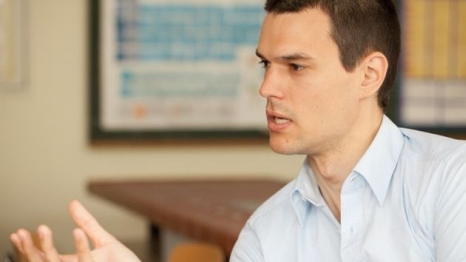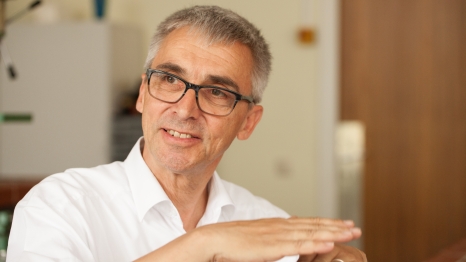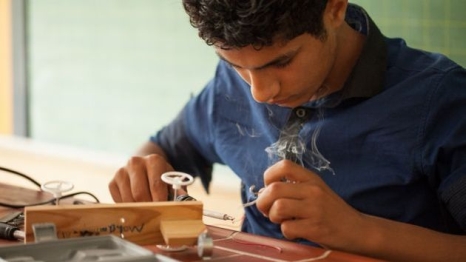
»Experimenting brings students closer together. We even manage the whole thing without using many words.«
Boosting self-confidence – creating prospects
Physics teachers Paul Feltes and Marc Büssing from the Gymnasium Frechen high school waged an experiment themselves when they set up the “MINTogether” project (“MINT” is German for “STEM”) for young refugees. Once a week, they investigate the world of science and technology together with them. As part of the voluntary classes, the youngsters screw together assembly kits for solar-powered cars and wind turbines, thus providing them valuable technical knowledge for future careers in a playful manner. The joint experiments and building activities help to remove prejudices and break down language barriers.
You are promoting youngsters, who hardly speak any German, with a technology project of all things. How did you come up with that idea?

Who comes to your classes then?
Marc Büssing: We also see the project as a kind of scholarship for outstanding pupils, which is why the more talented German students take part.
And how do the classes actually work from a practical perspective?
Marc Büssing: Many of the projects are self-determining. Anyone who picks up two solar cells at the beginning, for example, must find out for themself how to wire them up.
So is your teaching method discovery-based learning?
What would you like to achieve with the project?
Marc Büssing: The promotion of STEM subjects amongst girls is also an important aspect. They feel a particular connection with our project.
Do the youngsters have any previous knowledge of science and technology?
And what do the children think of the project?
Marc Büssing: As teachers, we have felt like the children have really appreciated this right from the beginning, which is incredibly good for the soul. But we have also been seeing the students make progress. Some of them become super involved in the project and positively seem to liven up and are becoming real experts. I’m thinking in particular of one girl who was very introverted in the beginning. She was all alone when she came to us. Now we even see her helping others that are struggling.
Have you also sometimes found that you have reached certain limits?
Paul Feltes: At the beginning, I wanted to teach the children about parallel and series connection using a chain of lights, but I quickly gave up on that idea (laughs). So we handed them 40 cables and a handful of little lights and said: make them light up. And they did!
Science and technology education clearly has a lot of potential for furthering young refugees. Why is that?
Paul Feltes: I see the potential especially in the future. We are providing these youngsters with technical as well as language skills that will be useful for their careers. Further down the line, we would like to place them with regular companies that take on trainees. But we’re not at that stage just yet.
Siemens Stiftung would like to create a stronger connection between STEM education and the promotion of values. Do you also adopt that approach?

That sounds ambitious. Has the project also helped you personally?
Paul Feltes: For us as high school teachers, working with refugee students who don’t speak German was a totally new situation. Jumping on board and immediately getting involved has been an exciting challenge.


